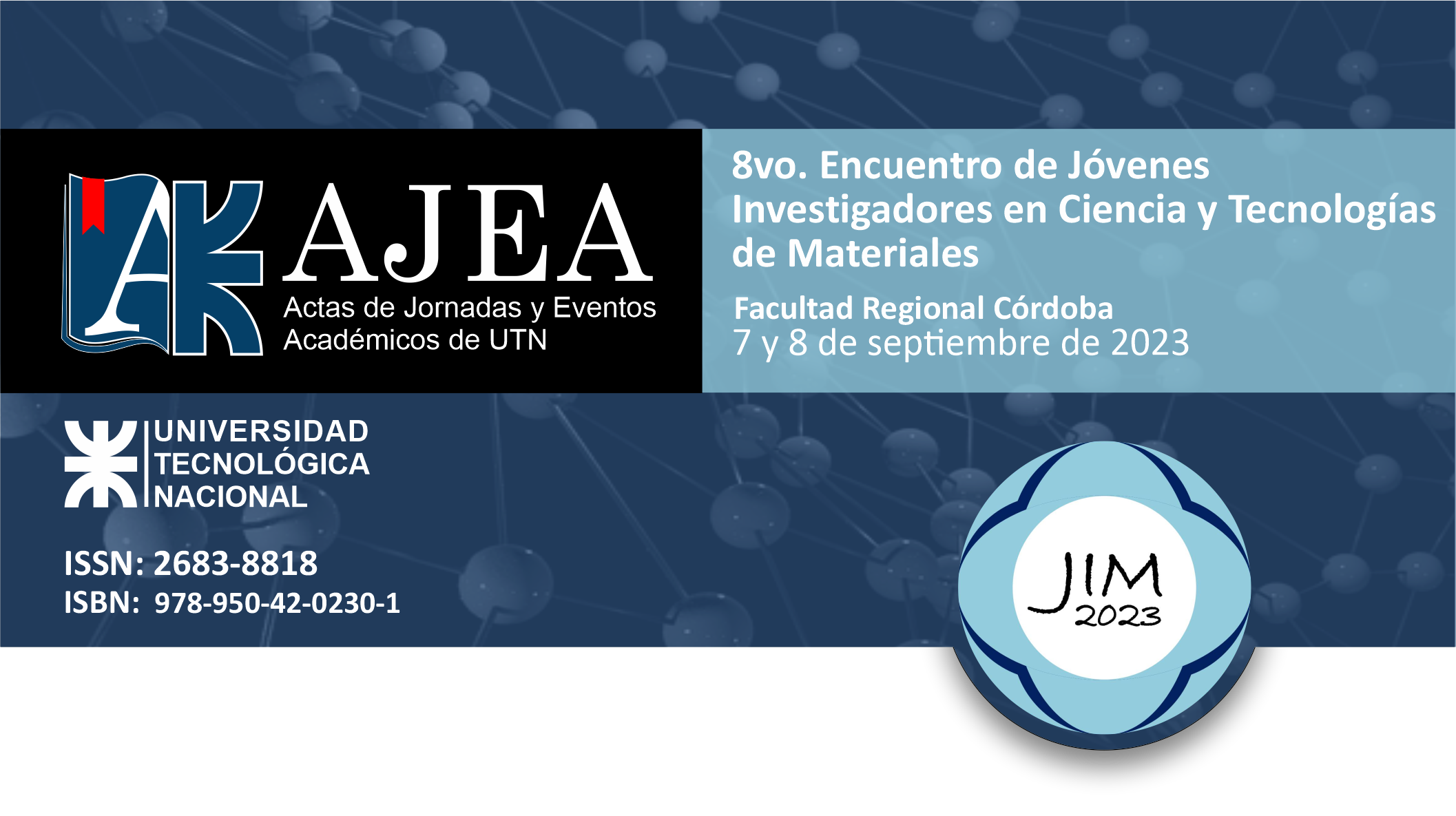Chromium desorption studies on organoclays for adsorbent regeneration
Keywords:
Chromium, Organoclay, Adsorption, DesorptionAbstract
Heavy metals are between the main contaminants in aquatic environments. In particular, chromium (VI) is one of the most toxic metals for living organisms. Among the technologies used for the removal of this contaminant, adsorption using natural and organically functionalized clays offers advantages such as effectiveness, operation simplicity and the availability and low cost of raw materials.
Entre Ríos province has large volumes of clay minerals that are abandoned after quarry exploitation. In previous studies, these residues functionalized with an organic compound were used as adsorbents of oxoanionic chromium species in solution, achieving promising results.
To continue this research, in the present work the desorption of hexavalent chromium ions retained in the organoclay was studied by using different eluents, such as water, NaOH, HCl and H2SO4. Among these, the best results were obtained with NaOH and values of desorption around 81 % were achieved.
Organoclay was used in 5 consecutive adsorption-desorption cycles, achieving removal values around 45 % until the fourth cycle. Successive regeneration cycles resulted in a reduction of desorption efficiency by 50 % after the fourth cycle.
The results obtained in the present work revealed that organoclay was effective in eliminating chromium in solution and could be regenerated up to 4 cycles using NaOH as desorption agent. Finally, the solid adsorbent studied could be considered a useful and economical material for the treatment of effluents contaminated with chromium.
Downloads
Metrics
Downloads
Published
How to Cite
Conference Proceedings Volume
Section
License
Copyright (c) 2024 Emiliano Centurión, Cristal Villarrubia, Melisa Soledad Romano, Valeria Corne, María del Carmen García

This work is licensed under a Creative Commons Attribution-NonCommercial 4.0 International License.










